Fjordmosen at forest Nørreskoven Als
Visit this diverse natural area on the east coast of the island of Als. Where forest, beach and meadows offer you an incredibly varied wildlife and a wealth of different plants.
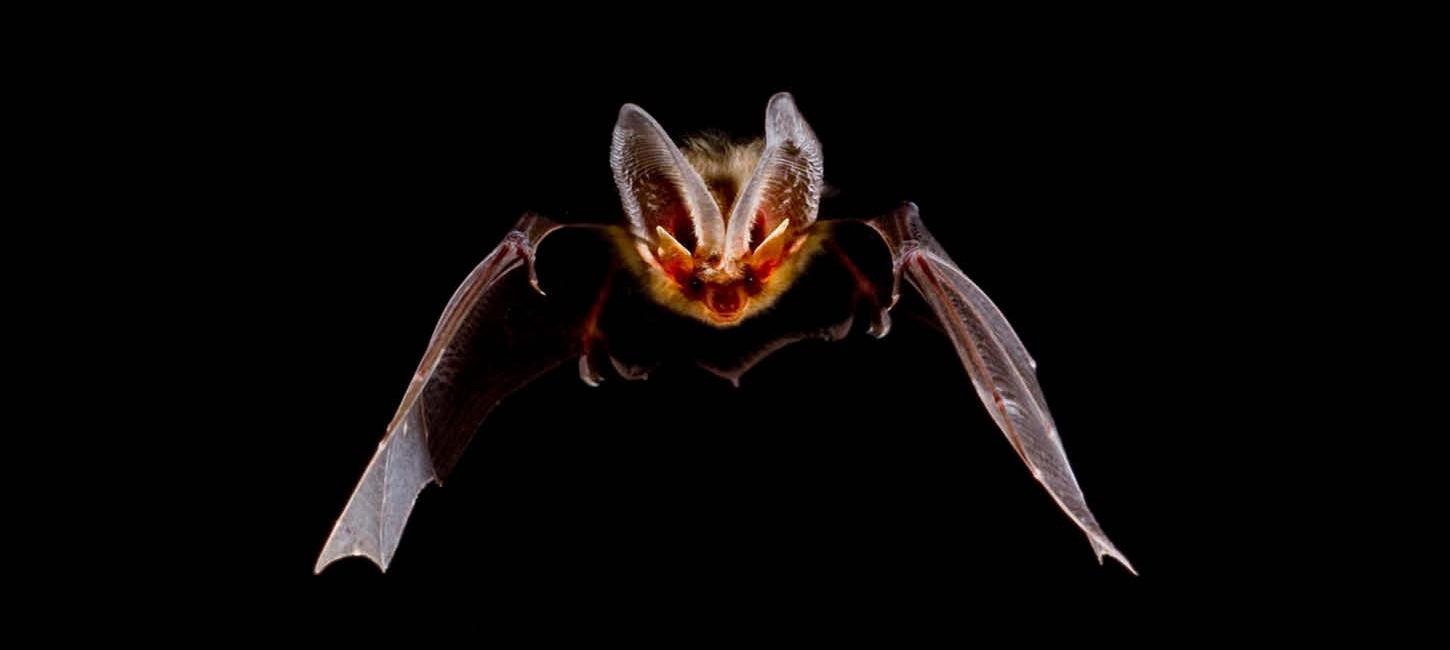
There are 19 species of bats in Denmark and of these, 9 species have been found in the Sønderborg area.
The bat is the only mammal that can fly actively, and the European bat species are nocturnal hunters who orient themselves and find prey via ultrasonic echolocation.
Imagine that the soprano pipistrelle, which itself weighs only 4-7 grams, eats 1-2000 mosquitoes in a single night!
But don't worry, we are not talking about large flying dogs of 40 cm and a wingspan of up to 1.5 metres and which by the way feed on nectar and fruit or vampire bats, which are only found in South and Central America.
You can therefore quite safely observe these little elegant aviators in the evening twilight!
The bat uses bio sonar to orientate and hunt with, the same goes for toothed whales, such as dolphins. During the hunt, the bat emits loud ultrasounds / screams that send an echo back when they hit an object. This echo is picked up by the ears, so the bat listens to its prey. The bat is able to regulate the sound beam so that it can emit a narrow sound beam, which is made shorter and wider when the prey is within a distance of one metre and thus reduces the risk of the dinner escaping, you could say that the bat's ears are its eyes.
The toothed whales emit clicking sounds, a similar method is used by a technical sonar on board submarines that send a ping and by fishing boats with echo sounders.
The bat's ultrasound is at such a high frequency that it requires listening equipment and sound programs for humans to hear. All bat species have their own spectra of ultrasound or audio DNA and often recordings are the best way to identify hunting bats.
A good bat night is a night after a sunny day with light winds. This is exactly the type of weather where the bat seeks the good eating grounds, when especially the large and smaller lakes and the forests with old trees offer plenty of insects - and the bat knows this.
If you are interested in hearing bat orientation and catching calls, you can get yourself a bat detector. A good Heterodyne detector costs from approx. DKK 1000.
Even though the majority of bat species in Sønderborg Municipality are listed on the Red List as LC (least concern), indicating not threatened, they are still fully protected.
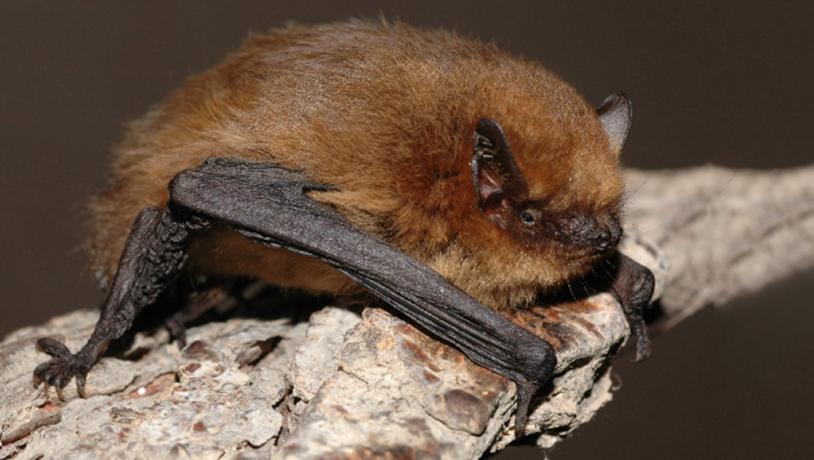
The soprano pipistrelle (Pipistrellus pygmæus) is the smallest and probably the most common bat species in Denmark. It prefers flying at low altitude along forest edges and fences, and its flight is relatively straight with few turns and loops. It is strongly associated with deciduous forests and park-like vegetation. Summer roosts are found in buildings, hollow trees, and bat boxes. Winter roosts are found in buildings but also in hollow trees. The female gives birth to 1-2 pups in July.
Facts about the soprano pipistrelle
Wingspan: 20-21 cm
Body length: 4-7 cm
Weight: 3-8 grams
Listed on the Red List as LC (least concern), not threatened.
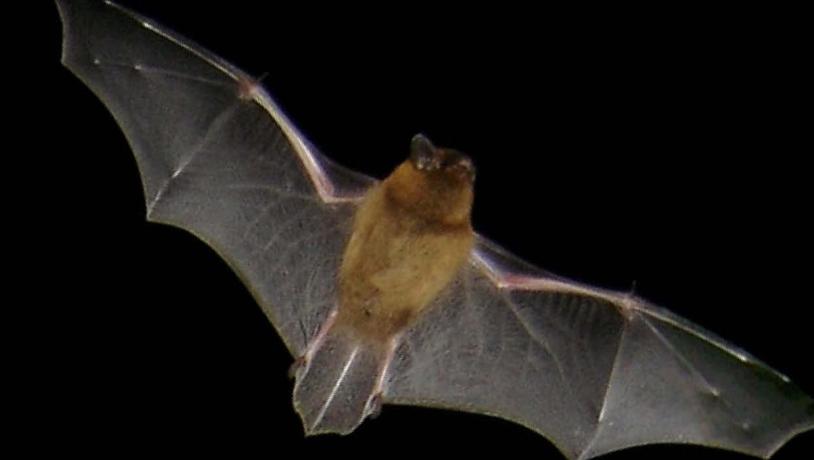
The common pipistrelle (Pipistrellus pipistrellus) closely resembles the soprano pipistrelle and only in 1999 were they listed as a separate species. In fact, they can only be reliably distinguished by DNA samples. The ultrasound call of the common pipistrelle is at 40-50 kHz, while the call of the soprano pipistrelle often ranges from 50-60 kHz, but overlaps make it difficult to identify individual individuals.
The flight of the common pipistrelle is fast, with swift maneuvers to the sides. It is associated with older deciduous forests and is widespread throughout the country. Summer roosts are found in houses, hollow trees, and bat boxes. Winter roosts are in houses and hollow trees.
Facts about the common pipistrelle
Wingspan: 25 cm
Body length: 3.5-4.5 cm
Weight: 8 grams
Listed on the Red List as LC (least concern), not threatened
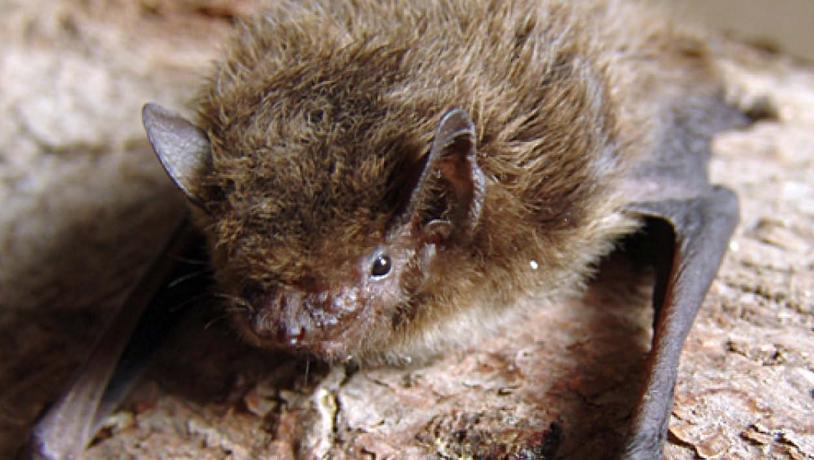
The Nathusius' pipistrelle (Pipistrellus nathusii) uses an ultrasound call of 37-44 kHz when hunting insects in the darkness of night. This is a long-distance flyer and closely resembles the soprano and the common pipistrelle bats, but is slightly larger. The Nathusius' pipistrelle bat, flying high with large sweeps, is associated with older deciduous forests and is widespread in deciduous forest areas from the German border along the eastern part of Jutland to the Aarhus region. Summer roosts are found in buildings, hollow trees, and bat boxes. Winter roosts are likely in buildings and hollow trees.
Facts about Nathusius' Pipistrelle
Wingspan: 25 cm
Body length: 4.5-6 cm
Weight: 10 grams
Listed on the Red List as LC (least concern), not threatened
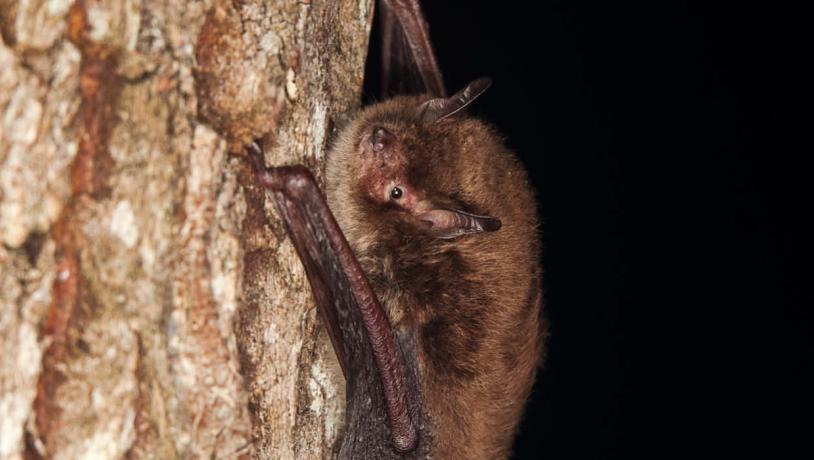
The Daubenton's bat (Myotis daubentonii) goes into hibernation around the end of September, first in November, and it is believed that most matings occur in the winter roost. It likes to hunt closely over the water surface. During the summer, it takes shelter in hollow trees. This is one of Denmark's most common bat species, and in this country, it is practically never found in houses. The winter roosts are the Jutland limestone mines, bunker complexes, and cellars. The female gives birth to a single pup in June-July.
Facts about Daubenton's Bat
Wingspan: 25 cm
Body length: 8-9 cm
Weight: 10 grams
Listed on the Red List as LC (least concern), not threatened.
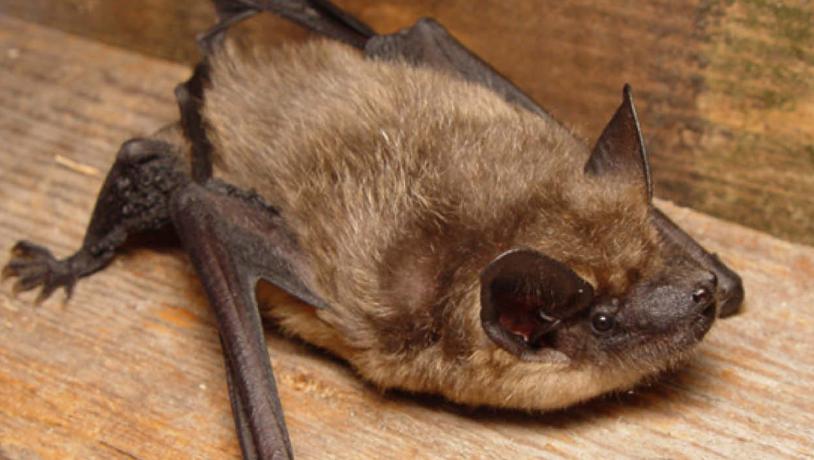
The serotine bat (Eptesicus serotinus) is one of the larger species in our area. It likes to hunt in large circles along hedges, forest edges, and around street lamps. It uses buildings as roosting places throughout the year, and its summer and winter roosts have never been found anywhere other than in houses, making it particularly vulnerable to poisoning from wood preservatives. Mating takes place in the fall, but fertilization occurs around May, after which the female gives birth to a single pup after a gestation period of 10-11 weeks.
Facts about the Serotine Bat
Wingspan: 35 cm
Body length: 12 cm
Weight: 15-35 grams
Listed on the Red List as LC (least concern), not threatened.

The brown long-eared bat (Plecotus auritus) truly lives up to its name - its ears are actually as long as its body. Its ultrasound call ranges from 27 to 65 kHz, and it particularly enjoys moths, with larger catches carried to a designated feeding spot. This bat species can actually hover in the air, a technique it employs along with its passive hearing to capture stationary insects on leaves and branches. It mostly resides in large barns, attics, and various types of buildings, but also in hollow trees and bat boxes. The winter roost is in inaccessible places in buildings and hollow trees. The female gives birth to one pup in July.
Facts about the brown long-eared bat
Wingspan: 25 cm
Body length: 4.5-5 cm
Weight: 5-12 grams
Listed on the Red List as LC (least concern), not threatened.
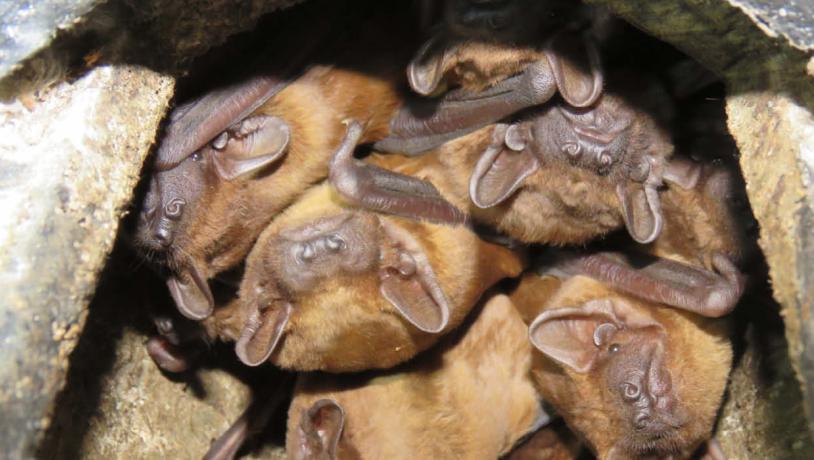
The common noctule bat (Nyctalus noctula) is not only the largest but also the most common bat species in Denmark. It flies very straight and likes to hunt for insects in the heights of the treetops. The noctule bat depends on old trees with cavities, as it exclusively uses caves as roosts year-round - for daytime roosts in summer, mating roosts in fall, and winter roosts.
Facts about the common noctule bat
Wingspan: 35-40 cm
Body length: 12-13 cm
Weight: 20-40 grams
Listed on the Red List as LC (least concern), not threatened.
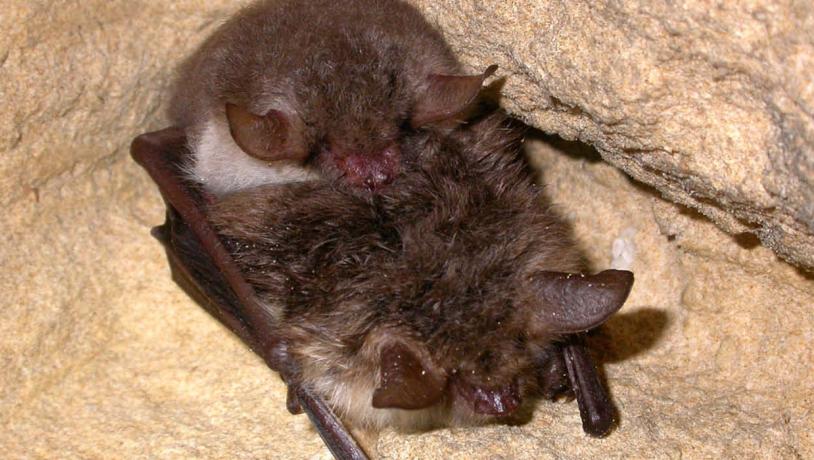
The natterer's bat (Myotis nattereri) not only catches prey in the air but is also capable of picking insects directly from leaves, stems, and walls. It is a relatively rare and locally occurring species in Denmark, observed only in a few places in our region.
The natterer's bat is associated with forested areas and primarily hunts inside the forest and along forest edges. The distribution in Sønderborg Municipality is linked to the forest areas, from Nørreskoven Als and the forests in midst the island of Als over Sundeved to Gråstenskovene and the forests along Flensburg Fjord. It has summer roosts in buildings and hollow trees. Winter is spent, among other places, in cellars, casemates, limestone mines, and similar locations.
Facts about the natterer's bat
Wingspan: 25 cm
Body length: 4.5 cm
Weight: 5-12 grams
Listed on the Red List as NT (nearly threatened), almost threatened

The pond bat (Myotis dasycneme) hunts over water, where it snatches insects from the surface and, with some luck, also small fish.
In Sønderborg Municipality, pond bats have been found by the lakes at Northern Als, by several of the coastal wetlands and the lakes in the forest Gråstenskovene. It is encountered at most larger lakes and rivers and occasionally at fjords and sounds. Colonies are usually located near the hunting areas. The pond bat has so far only been found in a few localities in southern Jutland. It is a relatively rare species in Europe and in Denmark, it is widespread in eastern Central Jutland to the Limfjord area. It seems that the pond bat has day quarters in houses and less often in hollow trees.
Facts about the Pond bat
Wingspan: 30 cm
Body length: 11 cm
Weight: 28 grams
Listed on the Red List as VU (vulnerable), vulnerable.
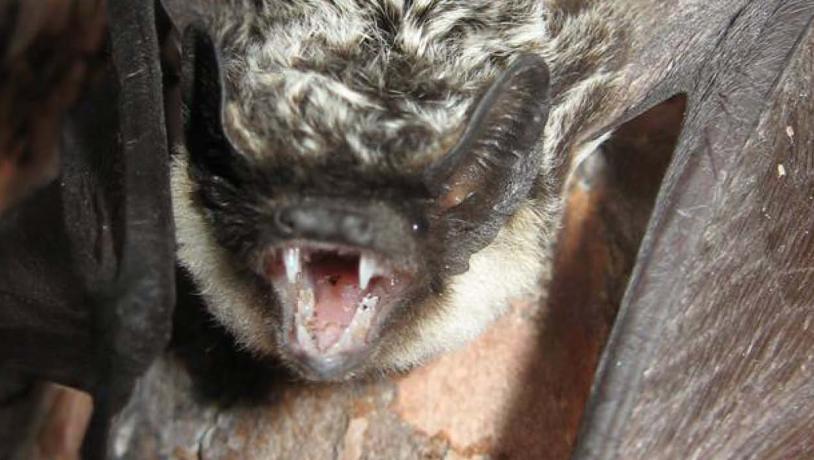
The parti-colored bat (Vespertilion murinus) is one of the few species that can be heard with the naked ear. The male's territorial song in the fall often drops from 30 kHz to 14 kHz, and the ticking sounds can be heard at the low frequencies when the males fly around tall buildings.
The parti-colored bat is a building-associated species found at Nordborg Castle and Elsmark in North Als. The summer roost is almost exclusively in smaller single-family houses and 1- to 2-story buildings in rural areas and villages. The winter roost is always found in buildings, usually very tall buildings with 4-5 stories or more. It typically hunts high and freely, especially over open landscapes and lakes, but also over forests and living hedges. The female gives birth to twins in June-July, and unlike other European bat species, these females have two pairs of nipples.
Facts about the Parti-colored bat
Wingspan: 25-30 cm
Body length: 6 cm
Weight: 10-20 grams
Listed on the Red List as LC (least concern), not threatened.
that bats go in hibernation in winter and their heart rate drops from 400 beats (below resting heart rate) to just 25 beats per minute
that some bats can be over 25 years old
that bats can forage (hunt) up to 10-20 km from their roosts site
that most bats are sexually mature at 2 years of age and give birth to 1-2 young per year
that the common noctule can withstand a temperature down to -7 ° C and still have a body temperature of + 1-2 ° C
that there are 5400 known mammals globally and of these, one in five is a bat.
All bat species are covered by the special bat agreement; Agreement on the Conservation of Populations of European Bats, and thus protected, even if they are red-listed as not endangered. You find bats on the Danish Red List under the group of Pattedyr (mammals) and the order Chiroptera.
In addition, all Danish bat species are listed in the EU's Habitats Directive in Annex IV, which means that they and their habitats are under strict protection. So before removing old trees or buildings, it is important to check if bats roost there!
It is therefore not permitted to spooke bats from the attic of one's house, but if large noise and odour nuisances occur, advice and guidance can be sought as well as any permission to move the bats on the Danish Nature Agency's website under the topic of harmful game.
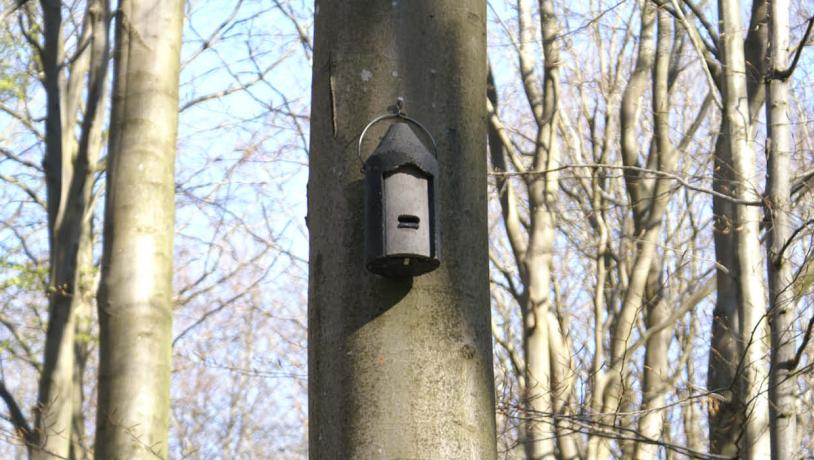
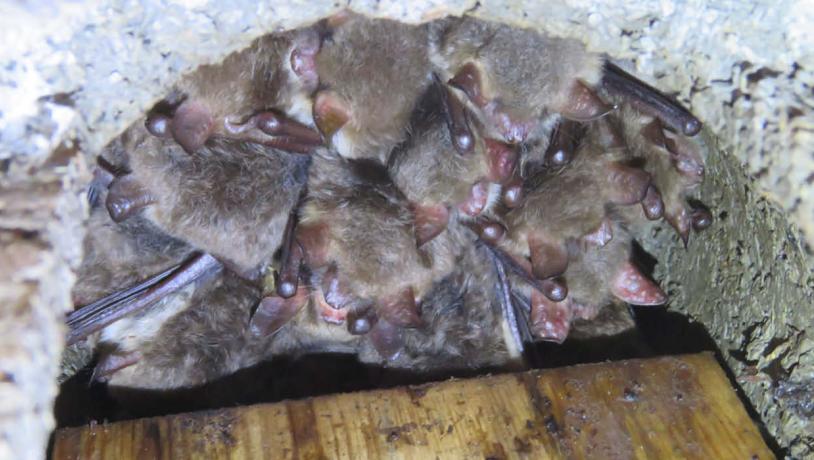
Do you also think that the bat is both useful and interesting?
Then the association Dansk Flagermus Forening might be of interest! In addition to the work of protecting the bats' habitats, work is also being done to set up bat shelter boxes in selected places.
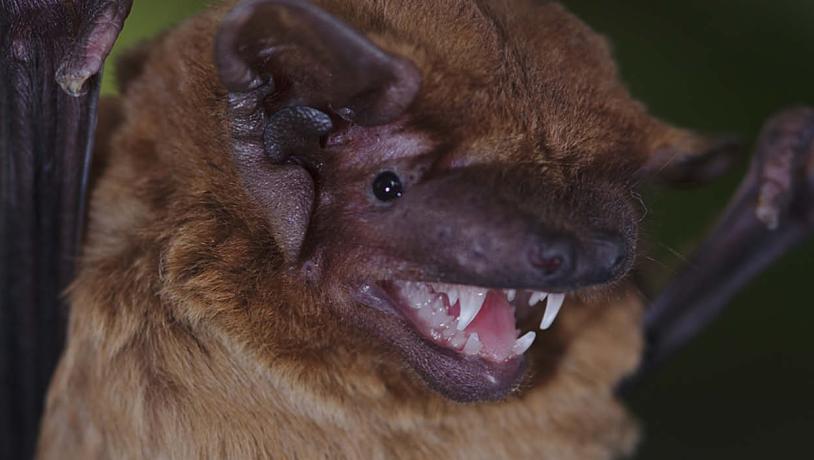
The noctule bat "smiles" at the photographer and shows its pointed teeth. Bats should not be handled and not at all without work gloves. Although the disease Rabies (dog madness) is not widespread in the Sønderborg area, it cannot be ruled out that migratory species are infected, so if you are bitten - seek medical attention immediately!Photo:Kamran Safi - Wikimedia Commons